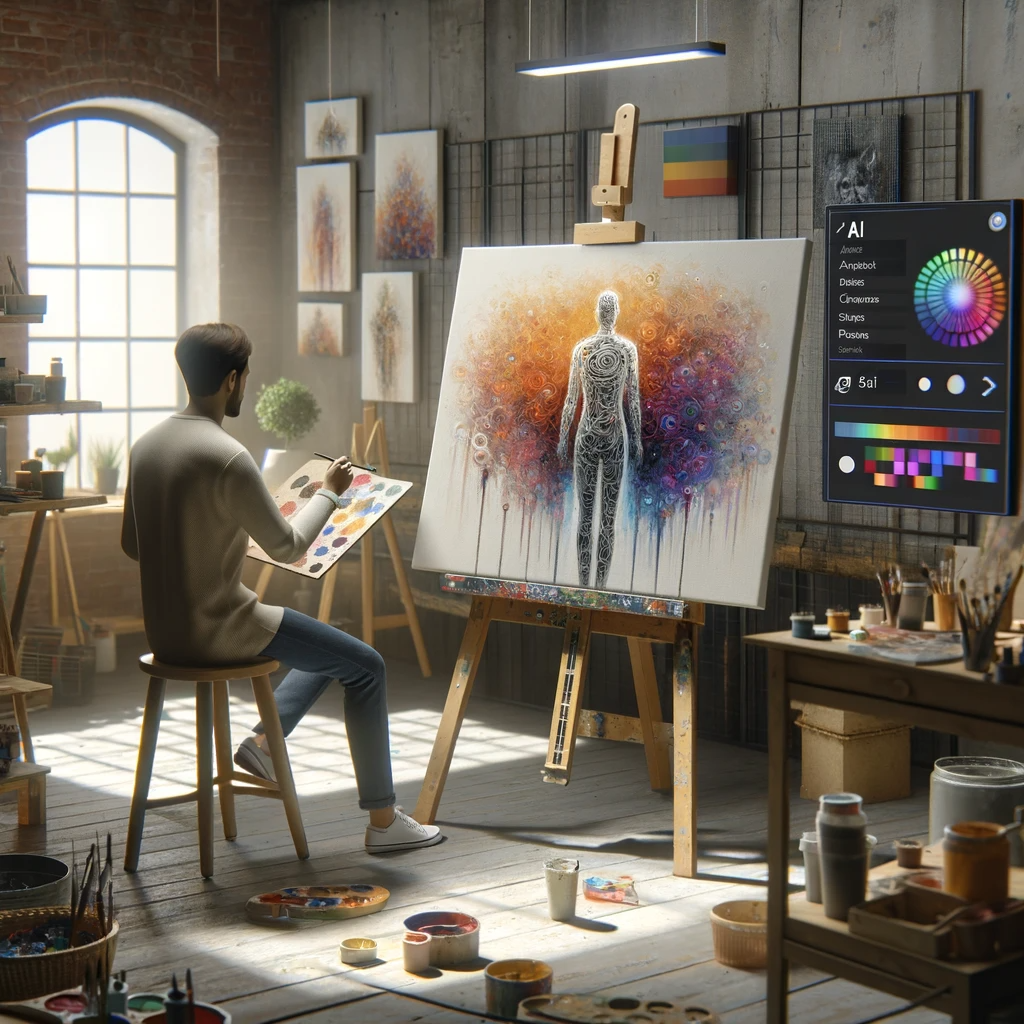The realm of art has long been considered a bastion of human creativity and expression. However, in recent years, Artificial Intelligence (AI) has begun to encroach upon this domain, raising questions about the role of technology in artistic creation. In this two-part article, we embark on a journey into the intersection of AI and art, exploring how AI is used in the creative process and its impact on the world of artistic expression.
AI as a Creative Tool
AI-Generated Art
AI algorithms, particularly Generative Adversarial Networks (GANs), have the ability to create visual art, music, and even poetry. These algorithms can generate unique pieces of art that challenge conventional notions of creativity.
Collaborative Art
Artists are using AI as a collaborator, integrating AI-generated elements into their work. This fusion of human creativity and AI innovation is giving rise to entirely new forms of artistic expression.

Expanding Artistic Horizons
Exploring Uncharted Territories
AI allows artists to explore uncharted territories, pushing the boundaries of what is artistically possible. It enables the creation of art that defies traditional norms and expectations.
Personalized Art
AI can analyze a viewer’s preferences and create personalized art experiences. This tailoring of art to individual tastes is redefining the relationship between art and its audience.
AI’s Impact on Artistic Identity
Questions of Authorship
The use of AI in art raises questions about authorship. Who is the true creator when AI is involved in the creative process? This question challenges our understanding of artistic identity.
Reinterpreting Creativity
AI challenges our preconceived notions of creativity, forcing us to reconsider what it means to be creative in the digital age. It prompts us to reflect on the essence of art itself.
Benefits and Concerns
Democratization of Art
AI can make art more accessible to a broader audience by reducing the barriers to creation. This democratization of art can lead to a more diverse and inclusive artistic landscape.
Loss of Authenticity
On the flip side, some argue that AI-generated art lacks the authenticity and emotional depth of human-created art. They fear that relying too heavily on AI may lead to a loss of the human touch in art.
AI and Art: Real-World Examples
AI-Generated Visual Art
Case Study: “Portrait of Edmond de Belamy” by Obvious
In 2018, the AI art collective Obvious used a GAN algorithm to create “Portrait of Edmond de Belamy,” which sold for $432,500 at auction. This AI-generated artwork challenged traditional notions of authorship and artistic value.
AI-Generated Music
Case Study: “Daddy’s Car” by Flow Machines
Flow Machines, a project by Sony CSL Research Lab, used AI to compose the song “Daddy’s Car,” which emulated the style of The Beatles. This achievement demonstrated AI’s potential in music composition.
AI-Generated Poetry
Case Study: “The Policeman’s Beard is Half-Constructed” by Benjamin
An AI program named Benjamin created a novel titled “The Policeman’s Beard is Half-Constructed.” While the content may seem bizarre, it highlights AI’s ability to generate creative written works.
AI-Powered Artists
Collaborative Art
Case Study: Refik Anadol
Refik Anadol is an artist who collaborates with AI algorithms to create immersive installations. His work blends AI-generated visuals with human creativity, resulting in captivating and thought-provoking art.
AI-Enhanced Photography
Case Study: Google’s “Night Sight”
Google’s “Night Sight” feature in its smartphone cameras uses AI to enhance low-light photography. It empowers photographers to capture artistic and detailed images in challenging lighting conditions.
Ethical and Philosophical Implications
Copyright and Authorship
The use of AI in art blurs the lines of copyright and authorship. Determining the rightful creator of AI-generated art raises legal and ethical questions.
Emotional Authenticity
Some argue that AI-generated art lacks emotional authenticity and the depth of human expression. The question of whether AI can truly capture the human experience through art remains a philosophical debate.
Human-Machine Collaboration
The collaboration between humans and AI in art challenges our understanding of creativity and innovation. It prompts us to reflect on the nature of collaboration and where artistic genius truly lies.

The Future of AI and Art
As AI continues to evolve, its role in art will likely become more prominent. It will offer new tools and possibilities for artists, but also raise ongoing questions about authenticity, creativity, and the essence of art.
Conclusion
Art and AI are on a collision course, one that has the potential to redefine the boundaries of creativity and artistic expression. While AI-generated art and collaborative projects are already making waves in the art world, they also challenge our understanding of what it means to create and appreciate art.
As AI continues to push the envelope in artistic creation, it is essential to engage in thoughtful discussions about ethics, authorship, and the role of technology in shaping the future of art. While AI may become an integral part of artistic creation, it is ultimately the human element—our creativity, emotions, and perspectives—that will continue to define the soul of art.
The relationship between AI and art is a dynamic and evolving one, and its full potential is yet to be realized. The future promises exciting possibilities for the fusion of technology and creativity, leaving us to ponder the infinite artistic horizons that lie ahead.
